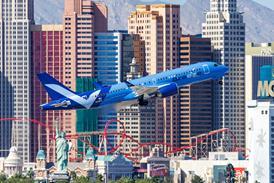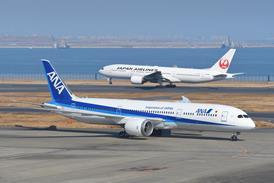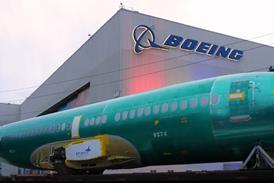A raft of new technologies and materials will feature on the Airbus A380. Not only will it be the largest civil airliner in service, it will be what Airbus calls a "technology platform" for the industry in the 21st century. The innovations include:
n Glare composite material for the upper fuselage skin panels. The material is a glassfibre-reinforced aluminium composite, made from alternating layers of aluminium sheet and glassfibre-reinforced bond film. The material is 15-30% lighter than aluminium and has excellent fatigue properties. "This is the first time we are using Glare in the civil aviation business," says Charles Champion. It uses a hot bonded manufacturing process but is repaired in the same way as standard aluminium panels.
n CFRP (carbon fibre reinforced plastics) will be used for the central wingbox - the first time its use has been extended into this area. It's another weight-saving move and represents a saving of 1.5 tonnes compared with the most advanced aluminium. Other areas where CFRP will be used are in the fin box and rudder, as well as the horizontal stabilisers and elevators. Together with thermoplastics, around 40% of the aircraft's structures and components will be made from the latest generation of carbon composites and advanced metallic materials.
n Hydraulic systems have been redesigned to help reduce weight. Pressure has been increased to 5,000psi against the standard 3,000psi to achieve the necessary power through smaller piping and components. The result is a weight saving of one tonne and improved maintainability.
n Dual architecture flight control systems are being implemented. They feature four independent primary flight control systems with two different configurations. Two use conventional hydraulic actuation systems while the other two use local electro-hydraulic actuators for control surfaces. The aircraft can be controlled using any one of the four systems.
n Taxi Driver, an airport ground manoeuvring map display system, is to be tested on an Airbus A340 development aircraft and may become standard on the A380. The system is designed to improve pilot situation awareness particularly in difficult conditions, says Alain Garcia, Airbus vice-president, engineering. "These conditions include taxiing at night, in congestion or in fog.
Source: Flight Daily News























